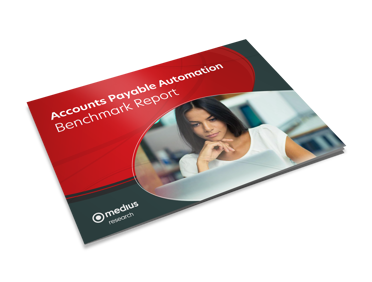How much does it cost to process an invoice – and where can you save?
In today’s rapidly evolving business environment, organizations need to keep close track of their operating costs to ensure bottom-line results are not dragged down by inefficient and resource-heavy operations.
Asking the question “how much does invoice processing cost" can be compared to "how long is a string”; the natural answer to both will be: it depends. Accounts payable departments should consider available industry benchmarks and best practices for invoice processing costs, as well as a break-down of what the cost per invoice is and where saving opportunities are available.
How much does it cost to process an invoice?
Invoice processing costs can vary greatly. It depends on a variety of factors including the invoice volume, the percentage of PO-invoices vs. non-PO invoices, if the AP function is centralized or decentralized, and the level of automation in the accounts payable process.
When it comes to the cost of processing an invoice, efficiency and automation play pivotal roles. Industry benchmarks reveal that the optimal cost per invoice should be around $2.81, representing a streamlined, highly automated AP process. However, the average cost across various organizations stands at $9.87 per invoice, indicating significant room for improvement in many AP departments.
These figures highlight the substantial impact that process optimization and automation can have on reducing operational costs. By striving to meet or even surpass the benchmark cost, companies can unlock considerable savings, enhancing their overall financial performance.
For businesses processing a large volume of invoices, the difference between the average and the benchmark cost can translate into substantial annual savings. This underscores the importance of adopting advanced AP automation solutions that streamline invoice processing, minimize manual intervention, and reduce the likelihood of errors.
Key factors elevating invoice processing expenses
Overcoming manual and paper-based inefficiencies
The first major cost driver is the reliance on manual, paper-based tasks within the AP process, which significantly increases labor costs and processing time. Transitioning to digital AP processes, such as digitizing incoming invoices and adopting electronic workflows, can mitigate these issues by reducing manual labor and accelerating the invoice lifecycle.
Streamlining with advanced invoice matching
The absence of efficient invoice matching technology presents another challenge, requiring manual reconciliation of invoices with purchase orders and goods receipts. Implementing an AP automation solution with advanced invoice matching capabilities can address this by enabling automatic, line-item level reconciliation, thereby minimizing manual intervention and enhancing accuracy.
Modernizing approval workflows
Inefficient approval workflows further contribute to processing delays. Traditional, office-bound approval processes can significantly slow down the workflow. Adopting a cloud-based, mobile-friendly AP solution can transform this process, allowing for remote approvals and ensuring a smooth, efficient approval flow.
Transitioning from legacy systems
Finally, the maintenance of legacy, on-premise software adds substantial costs related to hosting, maintenance, and user licensing. Shifting to a cloud-based AP automation platform can alleviate these burdens by offering scalability, reducing IT overhead, and ensuring access to the latest updates without additional costs.
By tackling these key factors with strategic technological solutions, businesses can achieve notable reductions in invoice processing costs, leading to enhanced efficiency and a positive impact on the bottom line.
Strategies to reduce invoice processing costs
 Embrace digital transformation
Embrace digital transformation
Go paperless: Transitioning away from paper-based processes is the first step towards cost reduction. Utilize AP solutions that offer automatic data capture and extraction, enabling the handling of invoices in various formats without manual entry.
 Implement comprehensive AP automation
Implement comprehensive AP automation
End-to-end automation: Adopt an AP automation solution tailored to the accounts payable workflow. Such systems can automate every aspect of AP, from invoice receipt to payment, enhancing efficiency, accuracy, and compliance.
 Enhance invoice matching capabilities
Enhance invoice matching capabilities
Advanced matching: Ensure your AP solution includes high-quality invoice matching capabilities that operate at the line-item level. This facilitates touchless processing, where invoices are automatically matched and processed without manual intervention.
 Continual process optimization
Continual process optimization
Iterative improvement: Beyond the initial implementation of AP automation, continuously seek to refine and improve your AP processes. Utilize your solution's analytics to monitor key performance metrics and identify opportunities for further optimization.
 Simplify approvals with mobile solutions
Simplify approvals with mobile solutions
Mobile approvals: Provide managers and approvers with a user-friendly, mobile tool for invoice approvals, enabling decision-making anytime, anywhere. This not only speeds up the AP process but also allows managers to focus on core business activities.
 Choose a future-proof cloud solution
Choose a future-proof cloud solution
Cloud-based solutions: Opt for a cloud-based AP automation system to reduce the IT burden associated with maintenance and upgrades. Cloud solutions ensure you're always equipped with the latest features and technologies, contributing to long-term savings and scalability.
With the right tools, technology and organization invoice processing costs can be dramatically reduced. Organizations of today need to understand that they need to minimize operating costs and adhere to best practices in order to remain competitive in this fast-moving business environment. Reducing the invoice processing costs can notably impact the bottom line.
Benchmarking your invoice processing costs
Understanding where your company stands in terms of invoice processing costs is crucial for identifying potential areas for improvement. By benchmarking against industry standards, you can gain insights into your operational efficiency and cost-effectiveness.
Reviewing industry benchmarks
Start by examining the benchmarks for invoice processing costs, such as the optimal and average costs per invoice. Use these figures to assess where your company falls on this spectrum.
Analyzing your position
Consider what it means for your company if your costs are above or below these benchmarks. A significant gap may indicate opportunities for optimization and cost reduction, particularly through automation and process improvements.
Actionable steps for improvement
Explore strategies to align your company's performance with industry benchmarks. This may involve adopting new technologies, refining AP workflows, or leveraging data analytics for better decision-making.
By regularly benchmarking your invoice processing costs and staying informed about industry standards, you can ensure your AP operations remain competitive and efficient.
See how you stack up
Medius has compiled an extensive AP Benchmark Report, which provides in-depth analysis and benchmarks from companies across various industries. This report can serve as a valuable resource for understanding how your invoice processing costs compare to those of your peers and what best-in-class performance looks like.






